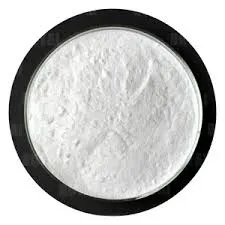
Nov . 03, 2024 00:45 Back to list
hec vs hpmc
Comparison of HEC and HPMC A Comprehensive Overview
Hydroxyethyl cellulose (HEC) and hydroxypropyl methylcellulose (HPMC) are both popular cellulose derivatives widely utilized in various industries, including pharmaceuticals, food, cosmetics, and construction. Despite their shared cellulose base, HEC and HPMC possess distinct chemical properties and applications. In this article, we will explore their differences, similarities, and the contexts in which each is best suited.
Chemical Composition and Properties
HEC is derived from cellulose through the reaction of ethylene oxide with alkali cellulose, leading to the substitution of hydroxyl groups with hydroxyethyl groups. This substitution enhances its solubility in water and modifies its rheological properties, making it an excellent thickener and stabilizer.
In contrast, HPMC involves the methylation of cellulose followed by the introduction of hydroxypropyl groups. The presence of these hydroxypropyl groups increases hydrophilicity and improves solution clarity compared to regular methylcellulose. HPMC displays a unique ability to form gels when heated, a property that has led to its widespread use in food and pharmaceutical applications.
Solubility and Viscosity Characteristics
One of the critical differences between HEC and HPMC lies in their solubility and viscosity profiles. HEC is known for its soluble nature in cold and hot water alike, whereas HPMC is primarily soluble in hot water but not as efficiently in cold water. This characteristic can influence the choice of thickening agent based on the processing conditions and end-use requirements.
hec vs hpmc

In terms of viscosity, both polymers can provide a range of viscosities based on their molecular weight and concentration. However, HPMC typically generates a more pronounced viscosity profile, making it suitable for applications requiring significant thickening and gel-forming capabilities.
Applications
HEC finds extensive use in applications that demand high water retention, such as in personal care products, where it acts as a thickener and stabilizer to improve texture. In the construction industry, HEC is employed in cementitious formulations for its excellent water retention properties, enabling better adhesion and workability of the materials.
HPMC, on the other hand, is highly valued in the food industry, particularly in the formulation of gluten-free products, soups, and sauces, where it acts as a thickening agent and stabilizer. Its ability to provide a better mouthfeel in food applications is also noteworthy. Furthermore, in pharmaceuticals, HPMC plays a vital role in drug formulation as a binder, film former, and controlled-release agent, taking advantage of its gel-forming properties.
Conclusion
In summary, both HEC and HPMC are essential cellulose derivatives with unique attributes that cater to different industrial needs. HEC is favored for its solubility in various conditions and superior water retention properties, while HPMC stands out for its gel-forming capabilities and versatile applications in food and pharmaceuticals. The decision between using HEC or HPMC ultimately hinges on the specific requirements of the application, including desired viscosity, solubility conditions, and functional properties. Understanding these differences can facilitate informed choices in formulation and product development across diverse sectors.
-
Versatile Hpmc Uses in Different Industries
NewsJun.19,2025
-
Redispersible Powder's Role in Enhancing Durability of Construction Products
NewsJun.19,2025
-
Hydroxyethyl Cellulose Applications Driving Green Industrial Processes
NewsJun.19,2025
-
Exploring Different Redispersible Polymer Powder
NewsJun.19,2025
-
Choosing the Right Mortar Bonding Agent
NewsJun.19,2025
-
Applications and Significance of China Hpmc in Modern Industries
NewsJun.19,2025







